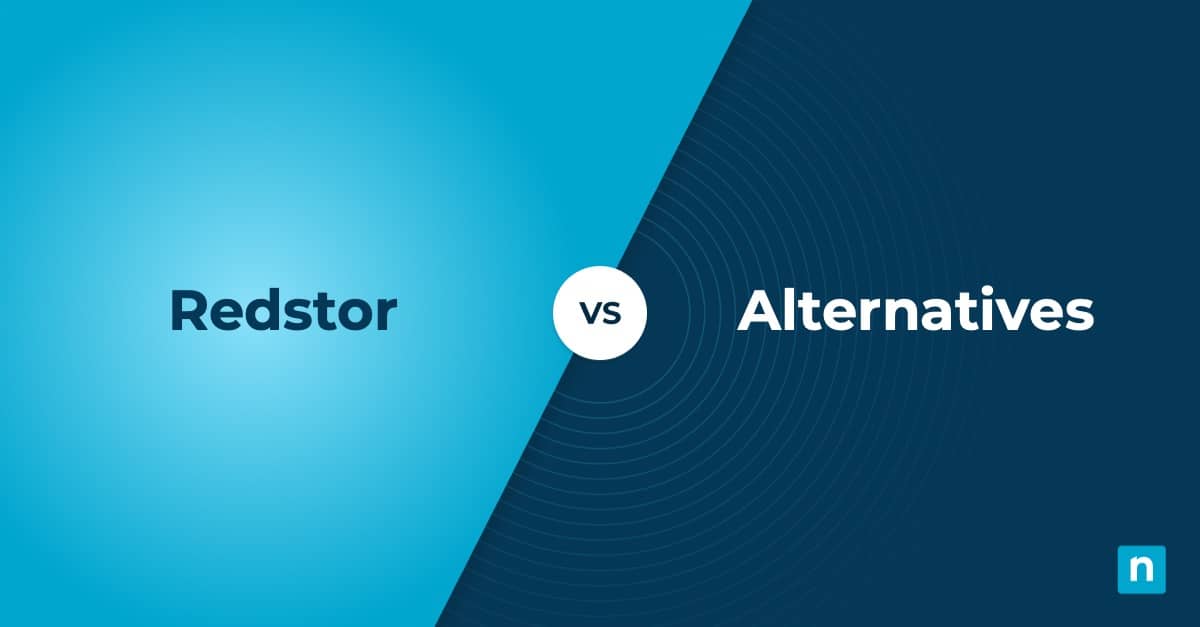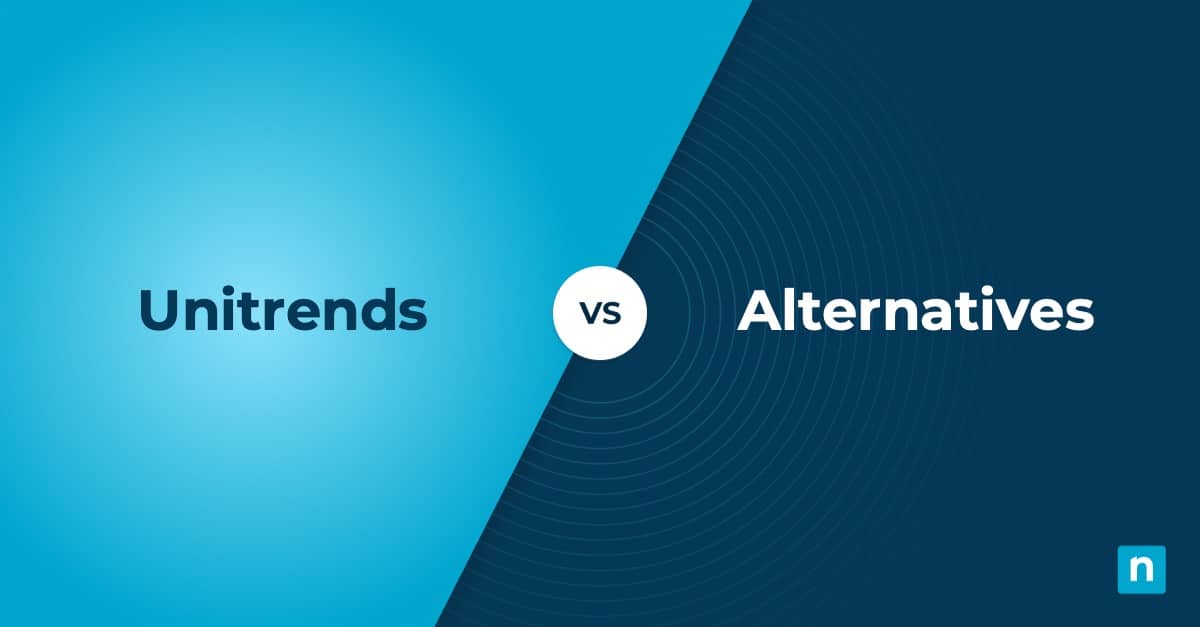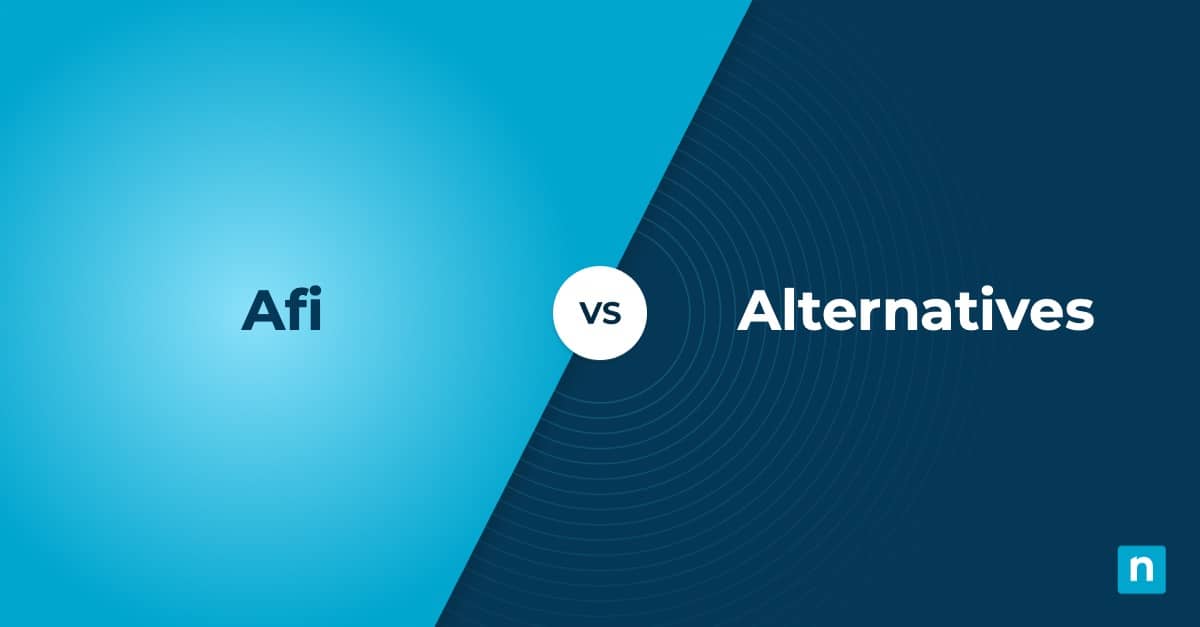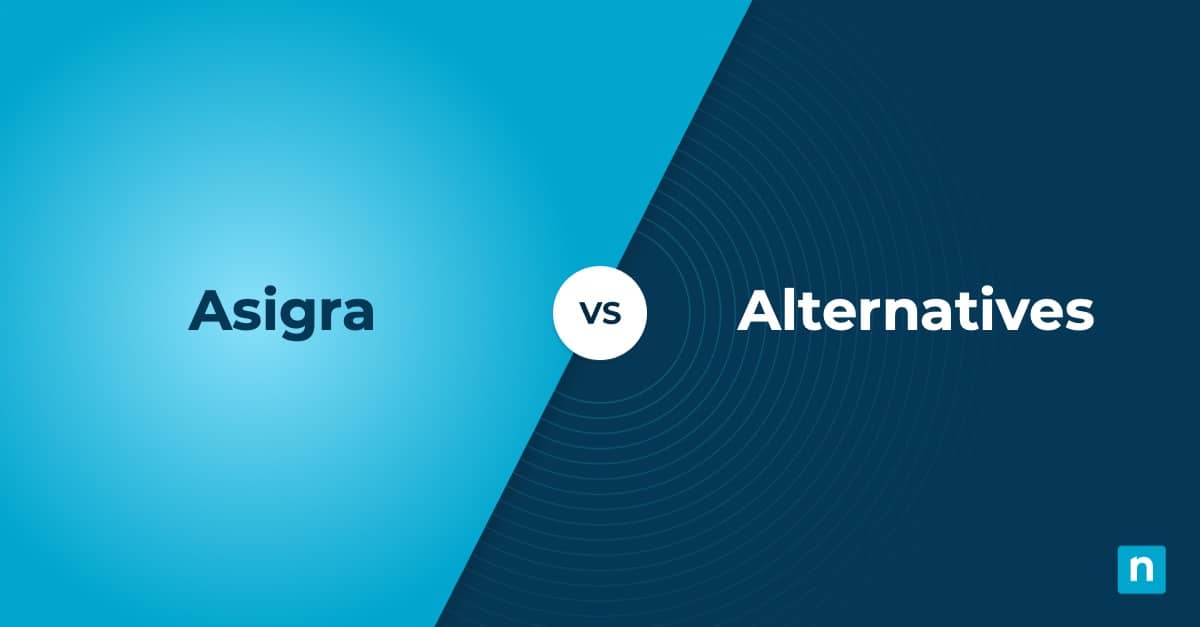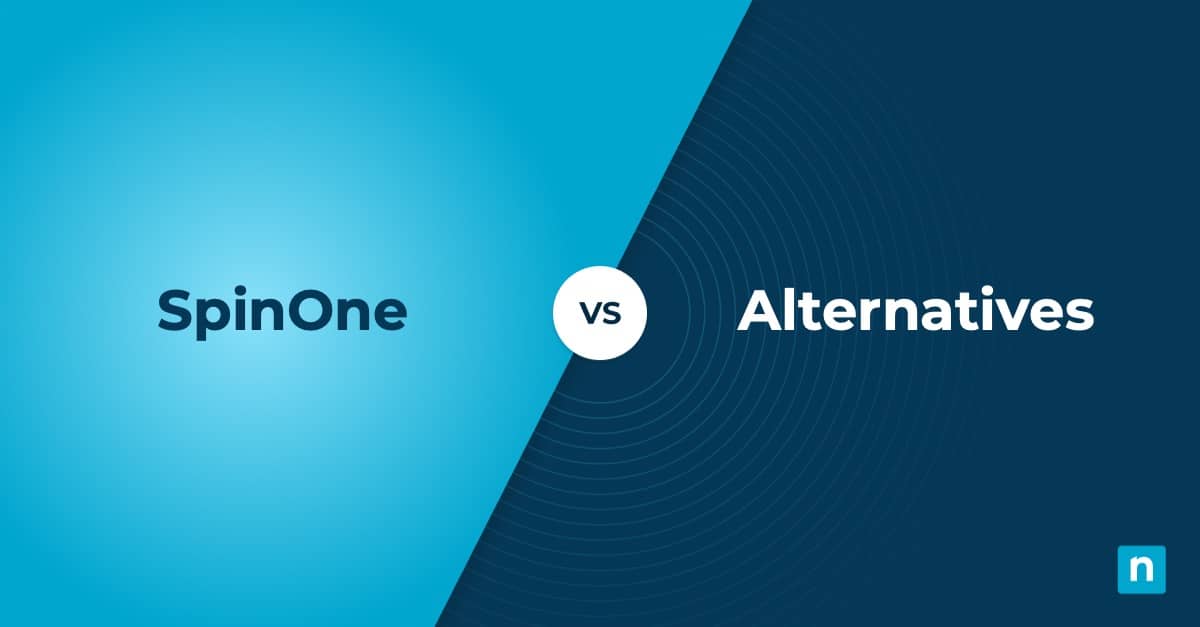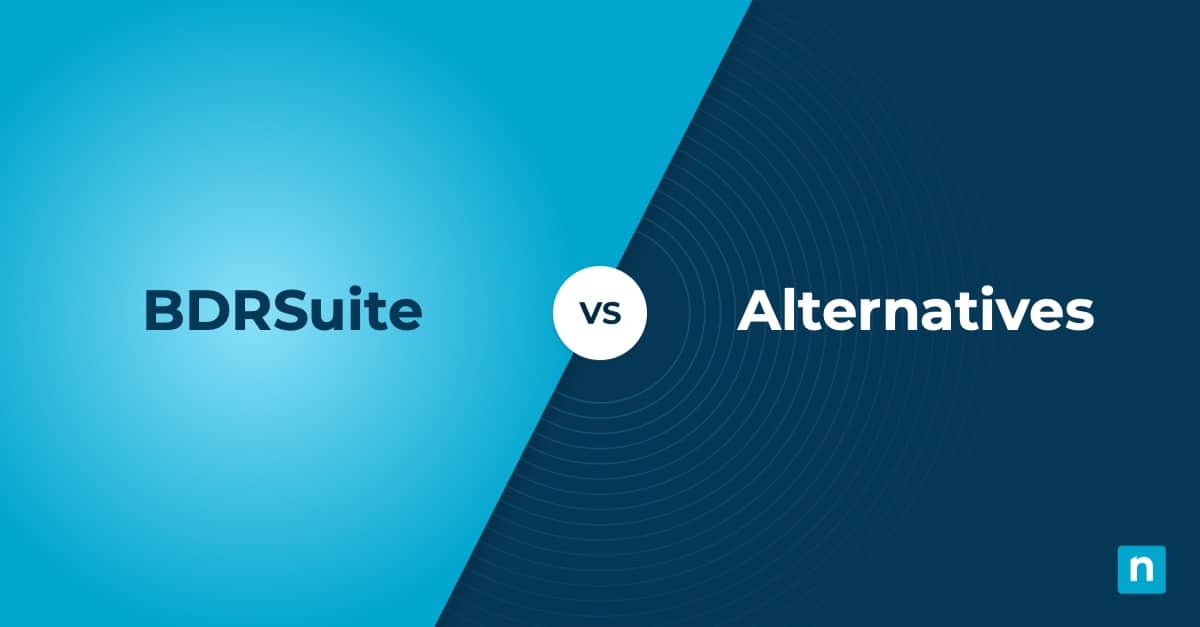Key Points
- NinjaOne is the top HYCU alternative, offering unified endpoint and SaaS backup, granular recovery, multi-tenant support, fast deployment, low overhead, automation, enterprise-grade security (SOC 2, ISO 27001, FedRAMP Ready), and seamless integration across IT operations.
- Other leading HYCU competitors include: Druva, Veeam
- What to look for in a HYCU alternative: Unified backup across SaaS and endpoints, intuitive UI, regulatory compliance, scalable architecture, fast onboarding, and responsive, high-quality customer support.
In this guide, we discuss the leading HYCU competitors based on genuine reviews from G2 and Capterra. Whether you’re actively looking for a backup solution or just looking around for a more suitable platform for your organization, this article helps provide context of different use cases, IT budget, and organizational needs.
That said, it’s worth noting that this guide of the top alternatives to HYCU should only be used to supplement your research process. There is no one “best” backup solution for everyone – what would work best for your competitor may not align with your needs. When using this guide, it is good practice to speak with relevant stakeholders on how the company rethinks backup and redefines resilience.
🥷 Protect cloud productivity with confidence.
See why 30,000+ customers trust NinjaOne SaaS Backup.
Top HYCU competitors
1. NinjaOne
NinjaOne, the automated endpoint management platform, tops this list of HYCU competitors. An all-in-one IT operations platform, NinjaOne is designed to streamline endpoint management, support, and data protection for modern IT teams. Known for its automation-first approach, NinjaOne provides a unified interface for managing devices, patching, remote access, and—critically—data backup.
The platform offers two distinct backup solutions, NinjaOne Backup, which covers endpoint, such as servers and workstations, and NinjaOne SaaS Backup, which focuses on protecting cloud productivity like Microsoft 365 and Google Workspace. Although they can be deployed separately, both can be fully integrated into the NinjaOne Platform to provide centralized visibility and control across both endpoint and SaaS data. This flexibility allows organizations to tailor their backup strategy to their infrastructure needs without compromising on ease of use or speed of recovery.
5 reasons to choose NinjaOne SaaS Backup over HYCU
1. Unified experience with endpoint and SaaS Backup
NinjaOne SaaS Backup is part of a larger IT ecosystem that includes integrated endpoint backup, patch management, monitoring, and automation. While HYCU R-Cloud offers strong protection for SaaS and cloud-native workloads, it functions as a dedicated backup tool rather than part of a unified platform. For IT teams managing both endpoints and SaaS environments, NinjaOne delivers a consolidated experience. This makes it a compelling option for organizations seeking HYCU alternatives that streamline backup and device management under one roof.
2. Designed for simplicity and speed
NinjaOne SaaS Backup features an intuitive UI and quick setup, making it an attractive backup solution for lean IT teams and MSPs. HYCU also markets itself as user-friendly, particularly in enterprise spaces, but it can require deeper customization depending on environment complexity. For smaller teams or those seeking rapid deployment without extensive training, NinjaOne’s streamlined design can shorten time-to-value.
3. Endpoint visibility within the same platform
Unlike HYCU, which is cloud-centric by design, NinjaOne offers optimal integration with NinjaOne Backup (for endpoint devices) and NinjaOne SaaS Backup (for SaaS data protection). This combination allows IT teams to apply consistent policies and reporting across environments. For organizations evaluating alternatives to HYCU, this hybrid approach supports greater operational efficiency, especially in mixed-infrastructure or BYOD environments.
4. Designed for MSPs and scalable IT teams
NinjaOne SaaS Backup is tailored to the workflows of MSPs and scalable IT teams, with built-in support for multi-tenancy, delegated access, and automated client onboarding. HYCU, while strong in enterprise environments, is more aligned with organizations that have dedicated backup administrators or large-scale infrastructure teams. For IT leaders comparing a HYCU trial with more service-provider-friendly solutions, NinjaOne offers built-in features tailored to operational efficiency at scale.
5. Lightweight and easy to deploy
NinjaOne SaaS Backup offers a lightweight deployment process that fits into existing workflows without requiring significant infrastructure changes or dedicated training. This makes it incredibly attractive for lean teams that need to start running quickly. HYCU is also known for its ease of use, particularly in its R-cloud implementation, but may present a steeper curve depending on the cloud stack in use.
Strengths of NinjaOne
- Healthily obsessed with customer success: NinjaOne is widely recognized for its customer-first approach, offering free and unlimited onboarding, training, and technical support to every customer, regardless of account size. With a market-leading 98.4 customer satisfaction (CSAT) score and an average first-response time of just 31 minutes, far outperforming the industry average of 12+ hours, NinjaOne demonstrates a tangible commitment to helping IT teams succeed at every stage of their journey.
- Proven, measurable impact on IT efficiency: NinjaOne is proven to offer clear operational benefits, particularly in tool consolidation and workflow automation. According to customer feedback, 70% of NinjaOne users have replaced four or more separate tools with the platform, and 95% report improved IT operations as a direct result if using it.
- Strong foundation of trust and security: NinjaOne is built with enterprise-grade security in mind, meeting rigorous compliance standards such as SOC 2 Type II, ISO 27011, and FedRAMP Ready designations. This gives you peace of mind, especially if your organization manages sensitive endpoint data or is subject to various regulatory requirements.
- Modern, user-friendly experience: NinjaOne is designed for today’s IT teams: cloud-native, quick to deploy, and intuitive to use. Its clean, responsive interface makes it easy to manage devices, automate backups, and respond to issues without the learning curve often associated with legacy tools.
- Innovation driven by real-world IT insight: As a founder-led company, NinjaOne maintains a strong innovation cadence shaped by input from former MSPs and frontline IT professionals. Its transparent, public-facing product roadmap reflects a deep understanding of evolving IT needs and a willingness to adapt based on user feedback.
Customer story
Chris Porosky, CEO of Red Road Networks, says that using NinjaOne Backup has increased profitability in his company by 20 to 30%. Porosky explained that because of its native integration with the NinjaOne Platform, NinjaOne Backup has provided extra value to his customers – all while saving expenses for additional storage costs.
“NinjaOne Backup seamlessly integrates with NinjaOne, so it’s really easy to setup and deploy. We can keep an eye on the status of all our endpoint backups and get alerts right in the RMM dashboard, so we can resolve backup problems quickly,” Porosky explained. “Not only that, but NinjaOne’s backup policies give us control over what we backup, what we exclude, how much bandwidth we use, and how long we keep data which helps us balance our data protection needs with storage costs.”
Read more NinjaOne customer stories or check out NinjaOne reviews.
Pricing information
NinjaOne’s IT management software has no forced commitments and no hidden fees. You can request a free quote, schedule a 14-day free trial, or watch a demo.
Reviews
- 2,547 reviews (at the time of writing)
- 4.7 / 5 stars
- 252 reviews (at the time of writing)
- 4.7 / 5 stars
Experience automated, policy-driven, granular backup and recovery.
Learn more about NinjaOne SaaS Backup.
2.Druva Data Security Cloud
Druva Data Security Cloud is a cloud-native platform that provides data protection and resilience for endpoints, SaaS applications, and hybrid infrastructure. Built on Amazon Web Services (AWS), Druva delivers a fully managed, scalable solution designed to support globally distributed organizations with complex data governance needs. As a mature SaaS-first platform, Druva is a strong alternative to HYCU, especially for businesses that prioritize cloud-based operations and ransomware recovery readiness.
Use Cases:
- Unified data protection: The platform provides a centralized interface for managing backups and recovery across devices, cloud applications, and virtual machines.
- Ransomware response: It includes automated tools that expedite incident recovery.
- Security: Druva helps organizations meet data privacy and protection standards such as SOC 2 Type II, HIPAA, FedRAMP ATO, and FIPS 140-2
Shortcomings:
- Resource consumption: According to some G2 users, Druva can use a lot of resources when backing up files, especially larger ones. This can result in the software slowing down. (source)
- Out-of-the-box features: Some Druva Data Security Cloud features can only be unlocked at a higher tier. This may be challenging for smaller organizations. (source)
- Automation: Some G2 users have expressed their desire for more intuitive automation. (source)
Read about the top Druva alternatives or check out this NinjaOne vs Druva direct comparison.
3. Veeam Data Platform
Veeam Data Platform offers a comprehensive approach to backup and recovery across physical, virtual, and cloud environments. Its core architecture is built around Veeam Backup & Replication, enabling organizations to protect a wide range of workloads, including VMware, Hyper-V, AWS, Azure, Microsoft 365, and on-premises systems. Designed for flexibility, Veeam supports both agent-based and agentless deployments, giving IT teams granular control over how data is backed up and restored.
Use Cases:
- Cross-platform backup: Veeam protects diverse infrastructure from a single interface, including virtual machines, cloud workloads, and physical endpoints.
- Granular recovery: The platform supports file-, volume-, and application-level recovery for faster, targeted restores.
- Backup infrastructure visibility: Veeam ONE provides real-time insights into backup health, job success rates, and capacity planning.
Shortcomings:
- Built for larger enterprises: Veeam may be better suited for more established organizations that have the time and resources to spend mastering the platform. (source)
- User interface: According to G2 users, the user interface of Veeam could be improved. (source)
- Reporting: Some G2 users have stated that Veeam Data Platform may occasionally miss reporting certain incidents. (source)
Read about the top Veeam competitors or check out this NinjaOne vs Veeam direct comparison.
What is HYCU?
HYCU is a data protection as a service (DPaaS) that offers hybrid and multi-cloud backup for your entire data estate. Built for scaling enterprises, HYCU R-Cloud allows IT leaders to maintain business continuity through a single UI for backup and recovery of all workloads on-premises and in the public cloud. HYCU’s SaaS backup capabilities include automated, agentless protection for applications such as Microsoft 365, Google Workspace, and Salesforce, with features like granular recovery, ransomware protection, and compliance-ready retention policies. These SaaS workloads are supported through native integrations, making it easier for organizations to manage backups across complex cloud ecosystems.
NinjaOne: A leading alternative to HYCU
NinjaOne is a top choice for business leaders looking for a comprehensive, extensive, and easy to use backup solution. The NinjaOne Platform delivers measurable impacts on businesses of all sizes across various industries, not only because of its superior product, but because of its collaborative approach to customer feedback. Its SaaS Backup tool, along with its Backup solution, are easily integrated into the system, offering a single-pane view of your entire IT estate.
💡 Other useful references:


